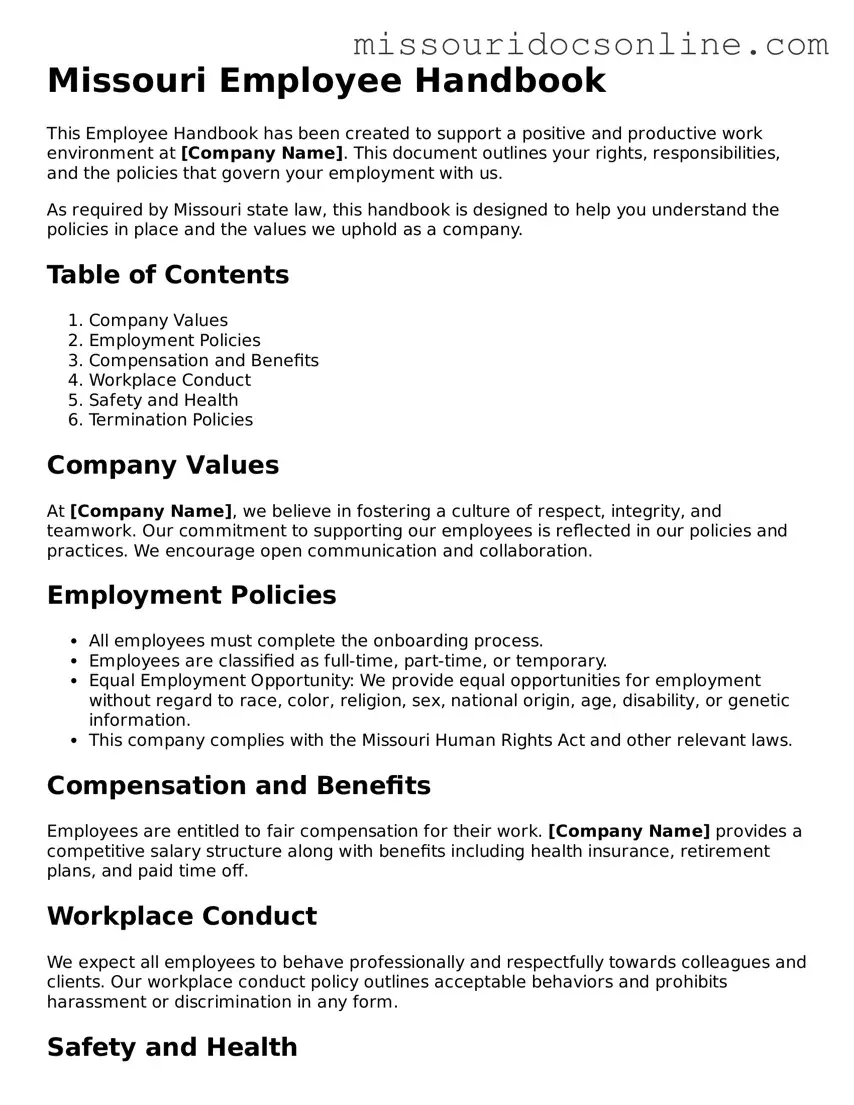Attorney-Approved Employee Handbook Form for Missouri State
The Missouri Employee Handbook form serves as a comprehensive document outlining an employer's policies, procedures, and expectations for employees. It is essential for establishing clear communication and fostering a positive workplace environment. To ensure compliance and clarity, consider filling out the form by clicking the button below.
Access Employee Handbook Editor
